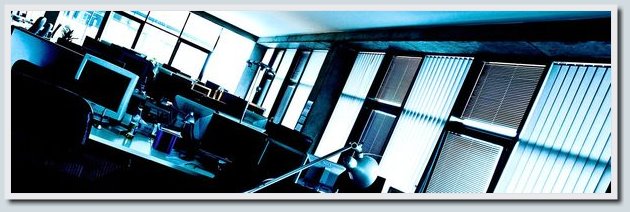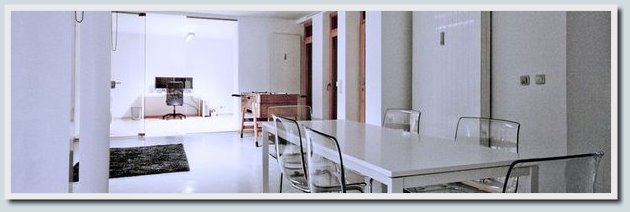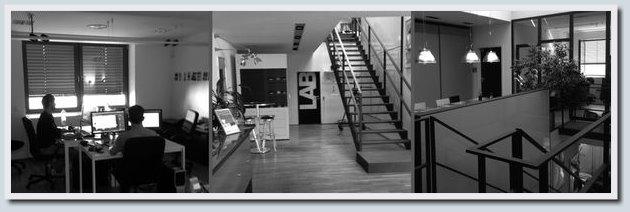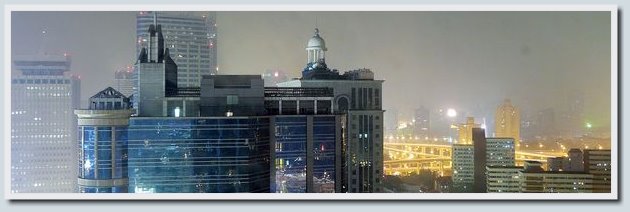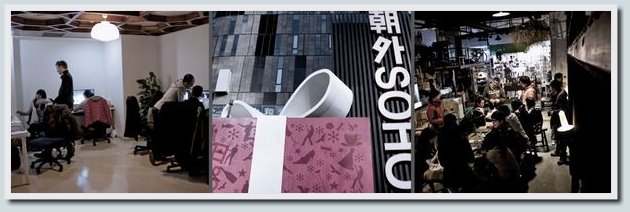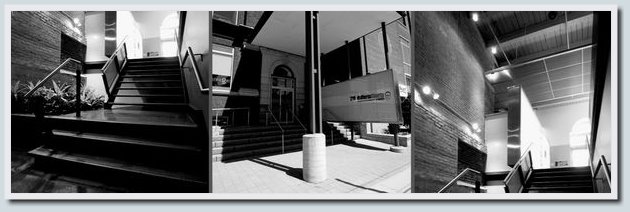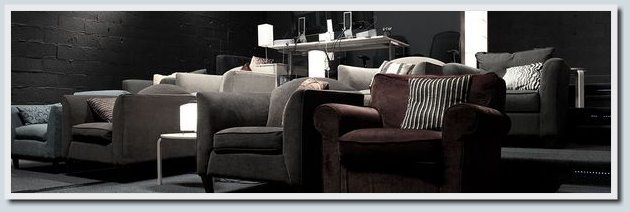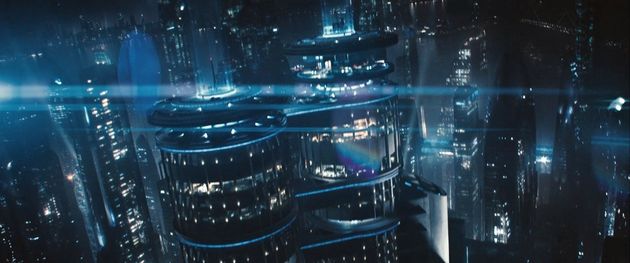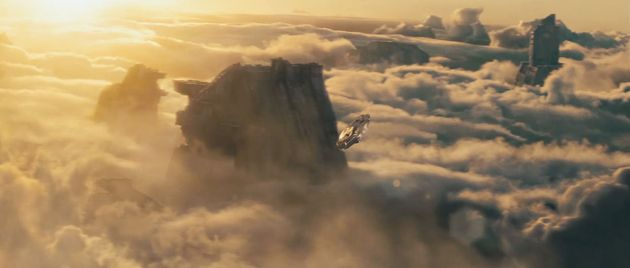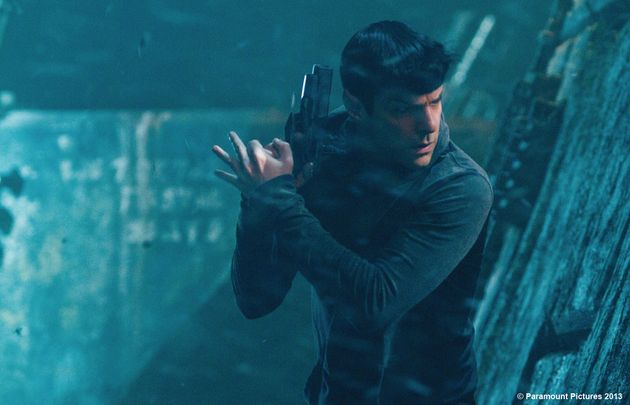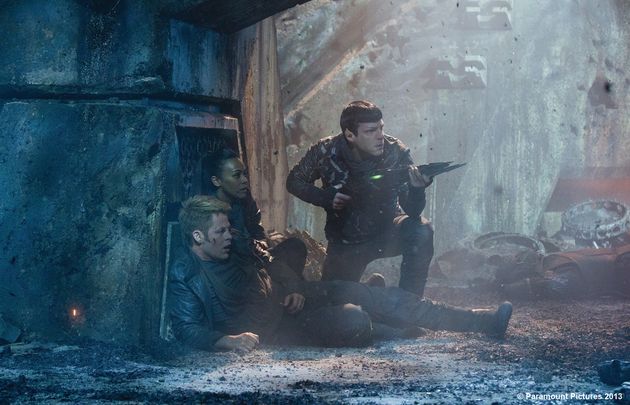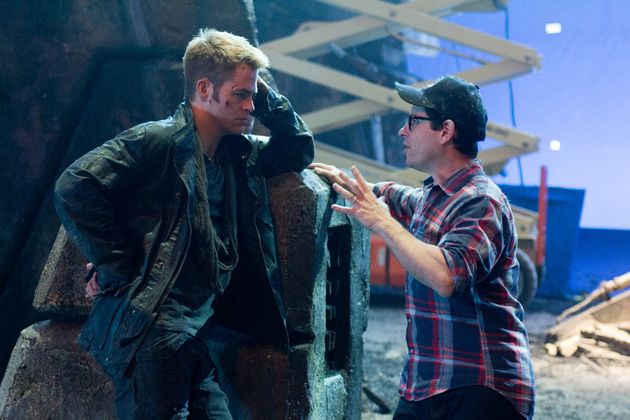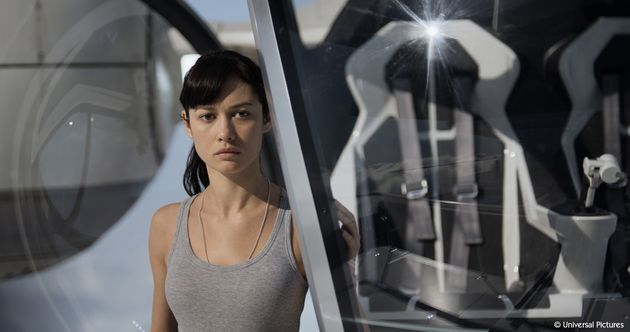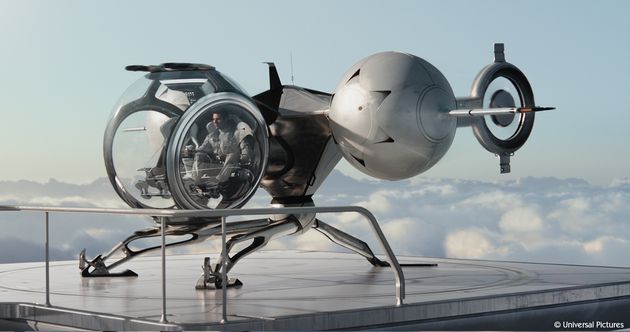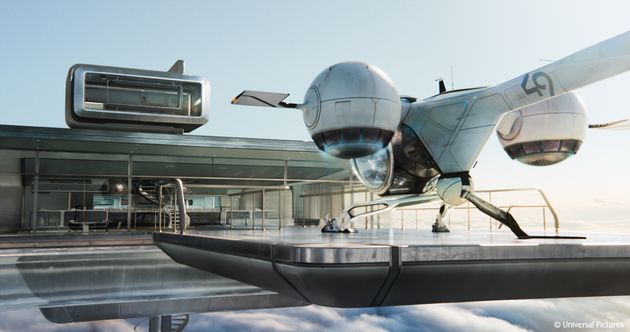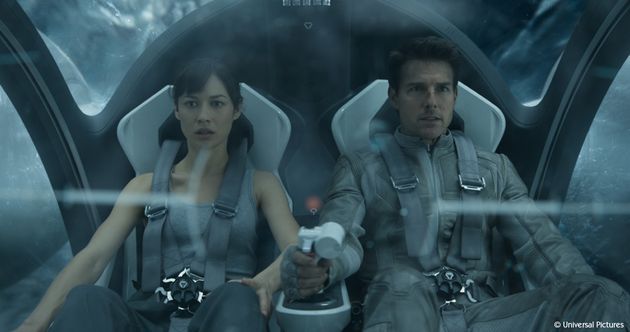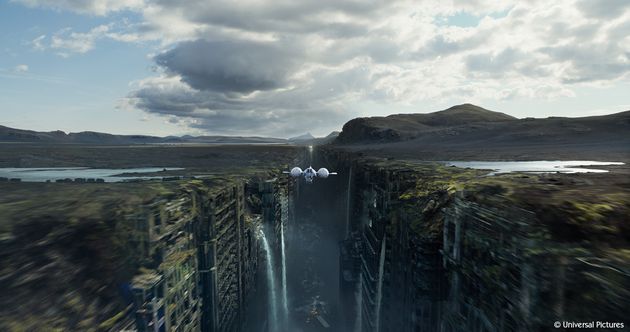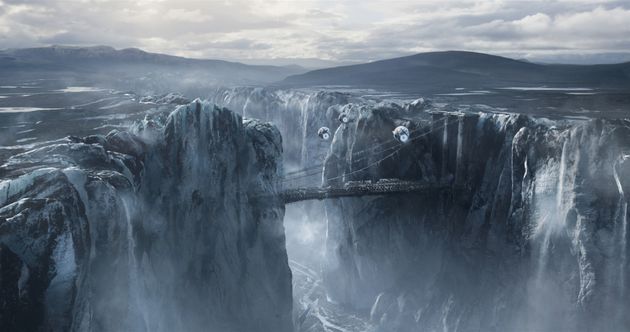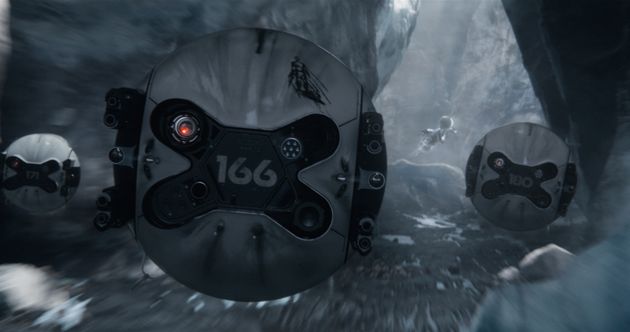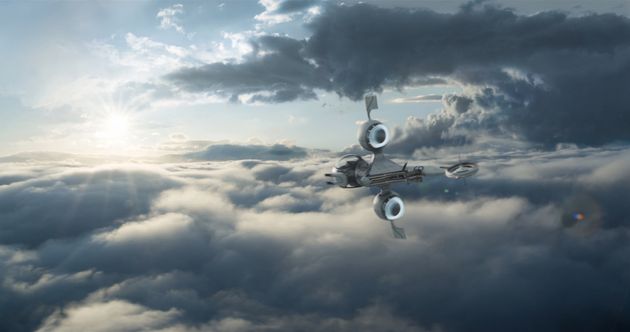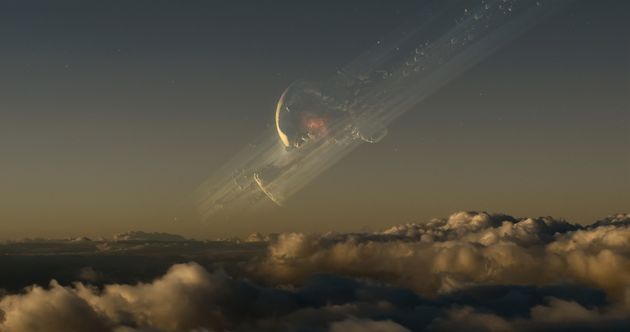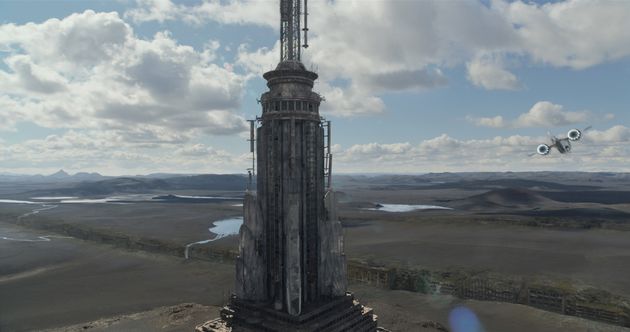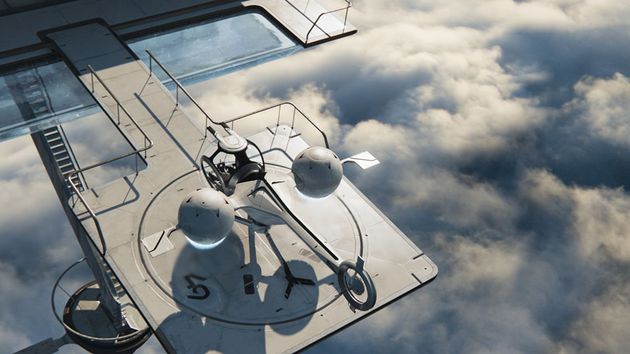Pixomondo and Dell: on the wings of success
“Team A”, “Hunger Games”, “Red Baron”, “Wrath of the Titans”, “2012”, “Keeper of Time”, “New Spider-Man”, “Fast and Furious 5”, “Fast and Furious 6” - this is far away not a complete list of those films, in the creation of visual effects to which the company Pixomondo actively participated.
In 2013 , the portfolio of the friendly team of this studio was replenished with wonderful special effects for the films Oblivion, After Our Era, Startrek: Retribution, as well as dragons and castles from the series Game of Thrones, shot from the series of “Song ice and flame. "
Here is a short video that can be used to assess what and how these guys made films of various genres:
')
Pixomondo has long been able to appreciate the advantage of Dell products. Without going into details, let's leave a couple of links to the video interview with representatives of this wonderful team:
In this article we will talk a little about what visual effects were used in Pixomondo when creating new films, and, in addition, we will show the hardware configuration from Dell, which was chosen to visualize dragons and draw locks in the Game of Thrones, as well as to create fantastically beautiful space battle scenes in the new film from the series “Star Trek”. Who cares, welcome under the cat (Caution! Traffic!).

Pixomondo was created back in 2001 in Germany. Now it is a large international company that has united hundreds of artists, designers and animators from all over the world to create modern visual effects that are ahead of their time. The offices of this factory for the creation of high-tech beauty are located in various parts of the globe. At the moment, the Pixomondo magic is going on in ten cities of Europe, Asia and America - Stuttgart, Frankfurt am Main, Munich, Cologne, Hamburg, Shanghai, Beijing, Toronto, Los Angeles and Baton Rouge, have no doubt, in time they will more.
On the Internet, they have repeatedly written about the productive cooperation of Pixomondo and Dell. Let's add some specifics about what technological solutions of the Dell company the Pixomondo company uses. As you probably already guessed, Dell is one of the main suppliers of computer hardware, as well as integrated software and hardware solutions for this powerful forge of special effects.
Let's name only some of the solutions that are used in Pixomondo:
Below we will talk about the specific configuration of computer hardware, which was used to create visual effects for some of the latest works from Pixomondo. In the meantime, we present to your attention a short video taken in 2012, in which the guys from this friendly team talk about their favorite workshop and creative process that reigns in it:
Among the large number of awards received by Pixomondo for high-quality and very original special effects, it is worth noting separately the Oscar for the best visual effects for the film The Time Keeper by Martin Scorsese. 480 people from 9 offices of the company were involved in the work on this film. Each team was given its own tasks, which then masterfully fit into the director’s whole project.
Different time zones in Beijing , Hamburg and Los Angeles made it possible to organize the continuous work of the team almost 24/7. The use of cloud solutions and productive systems from Dell made it possible to quickly transfer working material from one Pixomondo unit to another without wasting time, which significantly affected the speed and quality of work.
Extremely tight timeframes, in which the Pixomondo team operates when creating special effects for TV series like Terra Nova and Game of Thrones, do not prevent Pixomondo artists and animators from doing everything qualitatively and on time, maintaining the status of leader in their field.
We will not be able to talk in detail about all the interesting projects in which the Pixomondo company is involved, but, alas, we will talk about some recent works. You can read the latest company news , as well as information about all the films that Pixomondo helped revive, on the official website .
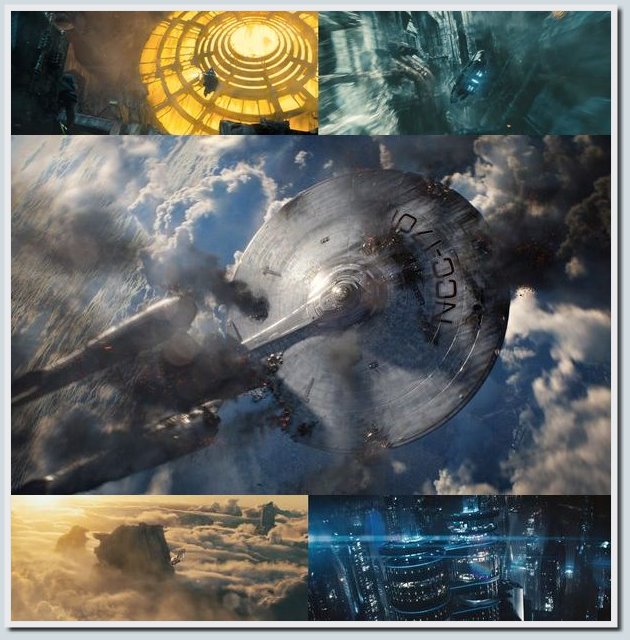
In 2013, saw the light of a new fantastic film from the series "Star Trek". Geoffrey Jacob Abrams, the master of his craft, undertook to conduct this part of the fantastic saga.
Many people know Jay Jay on the TV series “Beyond the Boundary” , in which he acted as an executive producer. In this multi-part sci-fi project on parallel worlds, as in many other works, the maestro repeatedly and very convincingly showed that working out every little thing, it would seem, a completely unimportant detail for him is the number one priority. Abrams made his first film about the Star Trek Universe in 2009. The updated version of the spaceship Enterprise and his team was greeted by the fans very cordially. And in 2013, another part of this wonderful cosmic epic was released, entitled “Star Trek: Retribution” .
Approximately one-third of all the visual effects for this film were made in Pixomondo: landing Spock on a volcano, attacking the headquarters of Starfleet, flying near the planet of the Klingon and landing on it, the fall of the Enterprise, and this is not a complete list of episodes in which Animators and artists of the company were involved.
The episode near the volcano was filmed using a green screen with the help of IMAX cameras . In conjunction with the artists from Pixomondo, the team of Industrial Light & Magic (created in 1975 by George Lucas ) worked. Abrams, working on this fragment of the film, focused on the lava, seething on the planet Mustafar in the third episode of Star Wars. In the same way as in Star Wars, when working on special effects, real sources of heat and smoke were used, computer simulations of lava, coal and additional smoke, shooting with a green screen and working with miniatures of objects.
See the result in a short video below.
The surprise attack on the headquarters of Starfleet was also filmed with the active participation of digital painting specialists from the Pixomondo team. During the shooting of this episode, there was an animator next to the operator, who tracked the “virtual track” of the ship’s movement, as well as the direction of the “shots” with a laser, which later, while working with video, he and his colleagues drew a picture next to the real objects.
The animators used aerodynamic and hydrodynamic computer simulations (to make the behavior of dust, debris and air turbulence during a laser attack as close as possible to reality) for high-quality drawing of damage to the building from shelling, as well as the damage suffered by the Khan's ship. The main software product that Pixomondo artists used to create visual effects for this episode is Autodesk Maya .
Another episode of the film, which I would like to draw your attention to, is the flight of the Enterprise next to the planet of the Klingons, a departure from the pursuit and landing on this planet. This fragment of the film in Los Angeles worked 25 artists Pixomondo.
When working on this episode, the Pixomondo team was greatly helped by modern equipment provided by Dell, as well as the powerful NVIDIA Quadro K4000 graphics cards. First, evaluate a small video clip showing the departure of the Enterprise from the chase when approaching Kronos:
Now to the details. In order to give Abrams a large space for maneuvering (when controlling cameras), the artists of Pixomondo created a deeply detailed, fantastically beautiful city of Klingon. For each frame, a huge three-dimensional image of the city was created, consisting of 130 million active polygons with textures up to 32 gigabytes.
For a more effective solution of such a difficult task, the Pixomondo management agreed with Dell about the delivery of the Dell Precision T7600 and Dell Precision T5500 workstations, in which the NVIDIA Quadro K4000 video cards were installed to speed up the rendering . Also, Dell PowerEdge R510 , Dell PowerEdge R410 and Dell PowerEdge R310 servers were additionally installed, plus the Dell UltraSharp U2410 monitors that are comfortable for the eyes (technical specifications of which we already reviewed in the article on the Liverpool FC home stadium infrastructure upgrade ).
Before Dell's workstations were installed with Nvidia's pre-installed graphics cards based on the best Kepler high-performance computing architecture at the moment, they had to work on similarly sized scenes, dividing the three-dimensional image into parts. Each part was processed separately, several times it was checked what happened, after which all the “pieces” were combined into one object, and only then the quality of the whole three-dimensional image was checked by a large number of parameters. Even dividing the bulky task into parts, artists often had to wait until the completion of their part of the “painting” for more than an hour.
But with the installation of new hardware, specially selected by Dell employees, the work went much faster. The need to divide the processed image into a large number of parts has disappeared, artists have the opportunity to switch on and adjust shadows, and also to move light sources, tracking changes in real time. With this system configuration, it was no longer necessary to turn off shadows and some heavy textures in the preview window.
While working on this episode of the movie “Star Trek: Retribution” to create vapors and smoke near the ship, as well as the varied relief of the planet Kronos, in conjunction with the 3DS MAX program, Pixomondo artists used such plug-ins as MARI and FUMEFX .
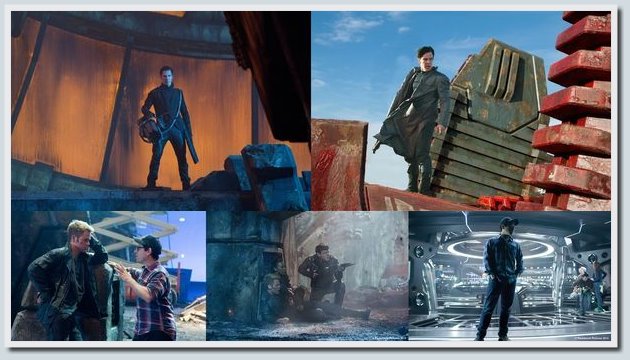
For those who would like to become more familiar with the process of creating visual effects for this film, we also recommend reading the articles “Star Trek Into Darkness on fxguide” , “NVIDIA Quadro K4000 Helps Pixelondo World Star Trek Into Darkness” and “STAR TREK INTO DARKNESS: Ben Grossmann - VFX Supervisor - Pixomondo " (although all the material that is listed there is in English, and not everyone will do).
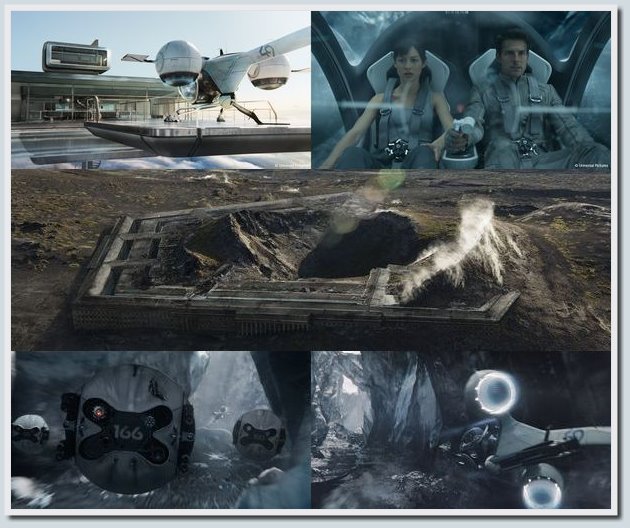
The film's director, Joseph Kosinski, decided to invite the Pixomondo team to create visual effects for his next film after the project “Tron: Legacy” after he got acquainted with one of the past works of this wonderful team - special effects for the film “Red Tails”.
More than 300 Pixomondo artists and animators were attracted to work on a new film by Joseph Kosinski called Oblivion . The company's offices in Los Angeles, London, Baton Rouge, Shanghai, Stuttgart and Toronto were involved, the work lasted as long as 15 months, but the result was definitely worth all the time and energy costs.
One of the tasks that the artists solved was the visualization of the inner and outer areas of the star tower (in the duplicated translation it was called a “tower”, although in the original Star Tower). At the preparatory stage for video editing, Bjørn Mayer, together with a group of animators, went to Hawaii. At the top of the picturesque mountain, 3 special RED Epic video cameras were installed , which used to take pictures of nature in many days in a row: sunsets, sunrises, the starry sky, and the movement of clouds. From the footage materials, 130 4-minute videos were edited in the studio.
The main level, workshop, control room of the “Star Tower” was mounted in real size on the set in Baton Rouge. The width of the main level turned out about 25 meters. Suitable video clips, assembled from Hawaii footage, were projected using 21 projectors on the Star Tower windows, covering an area of 152 meters X 13 meters, when filming the main episodes of the film.
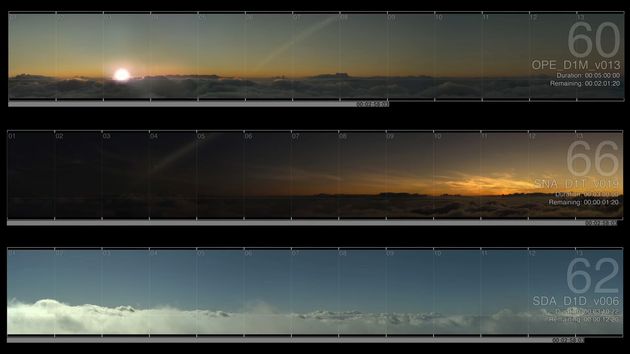
Shooting the main episodes with the “background weather” outside the window began only when, after a large number of tests, Joseph Kosinski with the operator Claudio Miranda together chose the appropriate weather conditions (by the way, Claudio received an Oscar for best cinematography, shooting his last film Life of Pi ").
This is how it all looked like:
Another task that the director managed to brilliantly solve together with a team of operators from Pixomondo is shooting and drawing an episode at the ice canyon.
It captures the spirit when you look at how the snow-capped mountains are falling apart into pieces from accidental laser hits on them during an air duel of a ship piloted by Jack and aggressive drones. The explosions of the defeated foes, lightning and raindrops that envelop the cockpit, while Jack spends another special reception, leaving the chase, even the mountains and waterfalls, next to which elusive truth seekers fly by - all this was realized thanks to the coordinated work of the Pixomondo team .
Working on these elements, artists in conjunction with 3ds MAX used plugins and applications such as Terragen (to create spectacular lightning, swirling air flows and raindrops), Houdini (to draw details of the canyon), a whole range of solutions was used to visualize the devastation and collapses - Naiad , Thinking Particles , FumeFX and Krakatoa .
For all the filming time, the Pixomondo team has done a huge amount of work, thanks to which the film turned out to be just wonderful.
In this article, we have covered only a few points related to the creation of visual effects for the film Oblivion. Those who wish to learn more about how this masterpiece of science fiction was created, we can offer several articles in English, in which the details of the working process are outlined in more detail:
"Game of Thrones" - One of the series, the visual effects which helped create the company Pixomondo.

The main manufacturer of computer equipment for Pixomondo for a long time is Dell. When working on the Game of Thrones series, the limited time frames and complex complex tasks that the artists faced stimulated the purchase of new workstations ( Dell Precision T5500 and Dell Precision T5600 ), monitors ( Dell UltraSharp U2410 , Dell UltraSharp U2711 and Dell UltraSharp U2312HM ), servers ( Dell PowerEdge R410 , Dell PowerEdge R620, and Dell PowerEdge R720 ), as well as storage arrays ( PowerVault MD3200 and PowerVault MD1220 ) for optimizing team performance.
Most of the visual effects that the Pixomondo team related to were related to dragons and castles. However, one of the most difficult tasks that animators solved during the filming of the series was the drawing of the shadow, born by Melisandre. Selecting a way to display this unusual creation, the artists found inspiration in the dementors from the Harry Potter films and in the mummy from the first part of the film The Mummy, which was filmed in 1999.
As they say, it’s better to see once than to read 10 times, so we suggest you look under the spoiler and watch several videos showing the transformation of raw video material into a bright and juicy picture after applying computer makeup.
In the process of working on the series, the artists of Pixomondo used the following solutions:
And finally, we post a video interview with one of the executives of Pixomondo, from which you will know why this international company has been cooperating with Dell for such a long time (unfortunately, there was no Russian version of the interview at the time of this article’s creation, therefore we are publishing in English from German):
In 2013 , the portfolio of the friendly team of this studio was replenished with wonderful special effects for the films Oblivion, After Our Era, Startrek: Retribution, as well as dragons and castles from the series Game of Thrones, shot from the series of “Song ice and flame. "
Here is a short video that can be used to assess what and how these guys made films of various genres:
')
Pixomondo has long been able to appreciate the advantage of Dell products. Without going into details, let's leave a couple of links to the video interview with representatives of this wonderful team:
- Thilo Kutter on Pixomondo and Dell collaboration (2010, video in English) ;
- Christian Vogt talks about the quality of interaction between Dell and Pixomondo (2011, video in German) .
In this article we will talk a little about what visual effects were used in Pixomondo when creating new films, and, in addition, we will show the hardware configuration from Dell, which was chosen to visualize dragons and draw locks in the Game of Thrones, as well as to create fantastically beautiful space battle scenes in the new film from the series “Star Trek”. Who cares, welcome under the cat (Caution! Traffic!).
Pixomondo - the abode of talent

Pixomondo office geography
Pixomondo was created back in 2001 in Germany. Now it is a large international company that has united hundreds of artists, designers and animators from all over the world to create modern visual effects that are ahead of their time. The offices of this factory for the creation of high-tech beauty are located in various parts of the globe. At the moment, the Pixomondo magic is going on in ten cities of Europe, Asia and America - Stuttgart, Frankfurt am Main, Munich, Cologne, Hamburg, Shanghai, Beijing, Toronto, Los Angeles and Baton Rouge, have no doubt, in time they will more.
On the Internet, they have repeatedly written about the productive cooperation of Pixomondo and Dell. Let's add some specifics about what technological solutions of the Dell company the Pixomondo company uses. As you probably already guessed, Dell is one of the main suppliers of computer hardware, as well as integrated software and hardware solutions for this powerful forge of special effects.
Let's name only some of the solutions that are used in Pixomondo:
- Dell PowerEdge - reliable and secure servers that are used to solve a huge number of tasks. The Dell server lineup is large enough, for each model you can individually select the hardware configuration, which makes it possible, together with experts from the manufacturer’s company, to choose exactly what is best for the workflow.
- The arrays of data storage systems Dell PowerVault and Dell EqualLogic are used to store a large amount of information, which is especially important for bulky graphics, detailed cities, buildings, armies and unusual creatures from the world of fiction and fantasy. We already told about disk arrays of Dell EqualLogic in our blog in some detail .
- Switches Dell Force10 - for high-quality network configuration in the offices of the company.
- Alienware and Dell Precision workstations are powerful workhorses that allow Pixomondo artists and animators to work with convenience and comfort.
- The Dell UltraSharp monitors provide an opportunity to experience the fullness and variety of the color palette while working on interesting projects, which is undoubtedly very important in areas such as creating visual effects for films and videos.
Below we will talk about the specific configuration of computer hardware, which was used to create visual effects for some of the latest works from Pixomondo. In the meantime, we present to your attention a short video taken in 2012, in which the guys from this friendly team talk about their favorite workshop and creative process that reigns in it:
Among the large number of awards received by Pixomondo for high-quality and very original special effects, it is worth noting separately the Oscar for the best visual effects for the film The Time Keeper by Martin Scorsese. 480 people from 9 offices of the company were involved in the work on this film. Each team was given its own tasks, which then masterfully fit into the director’s whole project.
Different time zones in Beijing , Hamburg and Los Angeles made it possible to organize the continuous work of the team almost 24/7. The use of cloud solutions and productive systems from Dell made it possible to quickly transfer working material from one Pixomondo unit to another without wasting time, which significantly affected the speed and quality of work.
Extremely tight timeframes, in which the Pixomondo team operates when creating special effects for TV series like Terra Nova and Game of Thrones, do not prevent Pixomondo artists and animators from doing everything qualitatively and on time, maintaining the status of leader in their field.
We will not be able to talk in detail about all the interesting projects in which the Pixomondo company is involved, but, alas, we will talk about some recent works. You can read the latest company news , as well as information about all the films that Pixomondo helped revive, on the official website .
"Star Trek: Retribution", "Oblivion" and "Game of Thrones" - as it were
"Star Trek: Into Darkness"

In 2013, saw the light of a new fantastic film from the series "Star Trek". Geoffrey Jacob Abrams, the master of his craft, undertook to conduct this part of the fantastic saga.
Many people know Jay Jay on the TV series “Beyond the Boundary” , in which he acted as an executive producer. In this multi-part sci-fi project on parallel worlds, as in many other works, the maestro repeatedly and very convincingly showed that working out every little thing, it would seem, a completely unimportant detail for him is the number one priority. Abrams made his first film about the Star Trek Universe in 2009. The updated version of the spaceship Enterprise and his team was greeted by the fans very cordially. And in 2013, another part of this wonderful cosmic epic was released, entitled “Star Trek: Retribution” .
Approximately one-third of all the visual effects for this film were made in Pixomondo: landing Spock on a volcano, attacking the headquarters of Starfleet, flying near the planet of the Klingon and landing on it, the fall of the Enterprise, and this is not a complete list of episodes in which Animators and artists of the company were involved.
The episode near the volcano was filmed using a green screen with the help of IMAX cameras . In conjunction with the artists from Pixomondo, the team of Industrial Light & Magic (created in 1975 by George Lucas ) worked. Abrams, working on this fragment of the film, focused on the lava, seething on the planet Mustafar in the third episode of Star Wars. In the same way as in Star Wars, when working on special effects, real sources of heat and smoke were used, computer simulations of lava, coal and additional smoke, shooting with a green screen and working with miniatures of objects.
See the result in a short video below.
The surprise attack on the headquarters of Starfleet was also filmed with the active participation of digital painting specialists from the Pixomondo team. During the shooting of this episode, there was an animator next to the operator, who tracked the “virtual track” of the ship’s movement, as well as the direction of the “shots” with a laser, which later, while working with video, he and his colleagues drew a picture next to the real objects.
The animators used aerodynamic and hydrodynamic computer simulations (to make the behavior of dust, debris and air turbulence during a laser attack as close as possible to reality) for high-quality drawing of damage to the building from shelling, as well as the damage suffered by the Khan's ship. The main software product that Pixomondo artists used to create visual effects for this episode is Autodesk Maya .
A quick look behind the scenes to create Star Trek Into Darkness
Another episode of the film, which I would like to draw your attention to, is the flight of the Enterprise next to the planet of the Klingons, a departure from the pursuit and landing on this planet. This fragment of the film in Los Angeles worked 25 artists Pixomondo.
When working on this episode, the Pixomondo team was greatly helped by modern equipment provided by Dell, as well as the powerful NVIDIA Quadro K4000 graphics cards. First, evaluate a small video clip showing the departure of the Enterprise from the chase when approaching Kronos:
Now to the details. In order to give Abrams a large space for maneuvering (when controlling cameras), the artists of Pixomondo created a deeply detailed, fantastically beautiful city of Klingon. For each frame, a huge three-dimensional image of the city was created, consisting of 130 million active polygons with textures up to 32 gigabytes.
For a more effective solution of such a difficult task, the Pixomondo management agreed with Dell about the delivery of the Dell Precision T7600 and Dell Precision T5500 workstations, in which the NVIDIA Quadro K4000 video cards were installed to speed up the rendering . Also, Dell PowerEdge R510 , Dell PowerEdge R410 and Dell PowerEdge R310 servers were additionally installed, plus the Dell UltraSharp U2410 monitors that are comfortable for the eyes (technical specifications of which we already reviewed in the article on the Liverpool FC home stadium infrastructure upgrade ).
Before Dell's workstations were installed with Nvidia's pre-installed graphics cards based on the best Kepler high-performance computing architecture at the moment, they had to work on similarly sized scenes, dividing the three-dimensional image into parts. Each part was processed separately, several times it was checked what happened, after which all the “pieces” were combined into one object, and only then the quality of the whole three-dimensional image was checked by a large number of parameters. Even dividing the bulky task into parts, artists often had to wait until the completion of their part of the “painting” for more than an hour.
But with the installation of new hardware, specially selected by Dell employees, the work went much faster. The need to divide the processed image into a large number of parts has disappeared, artists have the opportunity to switch on and adjust shadows, and also to move light sources, tracking changes in real time. With this system configuration, it was no longer necessary to turn off shadows and some heavy textures in the preview window.
While working on this episode of the movie “Star Trek: Retribution” to create vapors and smoke near the ship, as well as the varied relief of the planet Kronos, in conjunction with the 3DS MAX program, Pixomondo artists used such plug-ins as MARI and FUMEFX .

For those who would like to become more familiar with the process of creating visual effects for this film, we also recommend reading the articles “Star Trek Into Darkness on fxguide” , “NVIDIA Quadro K4000 Helps Pixelondo World Star Trek Into Darkness” and “STAR TREK INTO DARKNESS: Ben Grossmann - VFX Supervisor - Pixomondo " (although all the material that is listed there is in English, and not everyone will do).
"Oblivion"

The film's director, Joseph Kosinski, decided to invite the Pixomondo team to create visual effects for his next film after the project “Tron: Legacy” after he got acquainted with one of the past works of this wonderful team - special effects for the film “Red Tails”.
More than 300 Pixomondo artists and animators were attracted to work on a new film by Joseph Kosinski called Oblivion . The company's offices in Los Angeles, London, Baton Rouge, Shanghai, Stuttgart and Toronto were involved, the work lasted as long as 15 months, but the result was definitely worth all the time and energy costs.
One of the tasks that the artists solved was the visualization of the inner and outer areas of the star tower (in the duplicated translation it was called a “tower”, although in the original Star Tower). At the preparatory stage for video editing, Bjørn Mayer, together with a group of animators, went to Hawaii. At the top of the picturesque mountain, 3 special RED Epic video cameras were installed , which used to take pictures of nature in many days in a row: sunsets, sunrises, the starry sky, and the movement of clouds. From the footage materials, 130 4-minute videos were edited in the studio.
The main level, workshop, control room of the “Star Tower” was mounted in real size on the set in Baton Rouge. The width of the main level turned out about 25 meters. Suitable video clips, assembled from Hawaii footage, were projected using 21 projectors on the Star Tower windows, covering an area of 152 meters X 13 meters, when filming the main episodes of the film.

Shooting the main episodes with the “background weather” outside the window began only when, after a large number of tests, Joseph Kosinski with the operator Claudio Miranda together chose the appropriate weather conditions (by the way, Claudio received an Oscar for best cinematography, shooting his last film Life of Pi ").
This is how it all looked like:
Another task that the director managed to brilliantly solve together with a team of operators from Pixomondo is shooting and drawing an episode at the ice canyon.
It captures the spirit when you look at how the snow-capped mountains are falling apart into pieces from accidental laser hits on them during an air duel of a ship piloted by Jack and aggressive drones. The explosions of the defeated foes, lightning and raindrops that envelop the cockpit, while Jack spends another special reception, leaving the chase, even the mountains and waterfalls, next to which elusive truth seekers fly by - all this was realized thanks to the coordinated work of the Pixomondo team .
Working on these elements, artists in conjunction with 3ds MAX used plugins and applications such as Terragen (to create spectacular lightning, swirling air flows and raindrops), Houdini (to draw details of the canyon), a whole range of solutions was used to visualize the devastation and collapses - Naiad , Thinking Particles , FumeFX and Krakatoa .
For all the filming time, the Pixomondo team has done a huge amount of work, thanks to which the film turned out to be just wonderful.
In this article, we have covered only a few points related to the creation of visual effects for the film Oblivion. Those who wish to learn more about how this masterpiece of science fiction was created, we can offer several articles in English, in which the details of the working process are outlined in more detail:
- "Inside Oblivion" by Ian Failes
- OBLIVION: Bjørn Mayer - VFX Supervisor - Pixomondo
- Double Trouble: The Making of Oblivion
- Claudio Miranda, ASC on “Oblivion”
"Game of Thrones"
"Game of Thrones" - One of the series, the visual effects which helped create the company Pixomondo.

The main manufacturer of computer equipment for Pixomondo for a long time is Dell. When working on the Game of Thrones series, the limited time frames and complex complex tasks that the artists faced stimulated the purchase of new workstations ( Dell Precision T5500 and Dell Precision T5600 ), monitors ( Dell UltraSharp U2410 , Dell UltraSharp U2711 and Dell UltraSharp U2312HM ), servers ( Dell PowerEdge R410 , Dell PowerEdge R620, and Dell PowerEdge R720 ), as well as storage arrays ( PowerVault MD3200 and PowerVault MD1220 ) for optimizing team performance.
Most of the visual effects that the Pixomondo team related to were related to dragons and castles. However, one of the most difficult tasks that animators solved during the filming of the series was the drawing of the shadow, born by Melisandre. Selecting a way to display this unusual creation, the artists found inspiration in the dementors from the Harry Potter films and in the mummy from the first part of the film The Mummy, which was filmed in 1999.
As they say, it’s better to see once than to read 10 times, so we suggest you look under the spoiler and watch several videos showing the transformation of raw video material into a bright and juicy picture after applying computer makeup.
Visual effects and creation of these
An overview of the visual effects for the multi-part project "Game of Thrones" from TheCGBros Channel:
A small conference dedicated to the creation of special effects for this series:
A small conference dedicated to the creation of special effects for this series:
In the process of working on the series, the artists of Pixomondo used the following solutions:
- Shotgun - to coordinate work between different studios;
- Nuke - for compositing (combining computer backgrounds);
- ZBrush - to create models of computer creatures;
- Maya - to animate all computer creatures;
- 3ds max with the V-Ray engine - for the final rendering of 3D models.
And finally, we post a video interview with one of the executives of Pixomondo, from which you will know why this international company has been cooperating with Dell for such a long time (unfortunately, there was no Russian version of the interview at the time of this article’s creation, therefore we are publishing in English from German):
Source: https://habr.com/ru/post/189420/
All Articles

